Here's how to increase virtual memory capacity on Windows
With Windows computers, memory is divided into two different types: hard drive and RAM. When virtual physical RAM is used up, Windows uses more virtual RAM or Virtual Memory, turning the hard drive into RAM to complement the computer's lack of RAM. Virtual RAM will combine with physical RAM and hard disk to handle applications and software on the system. However, if users install a lot of software, playing games regularly on the computer will also cause virtual RAM memory to run out and a message saying "Your system is low on virtual memory. Windows is increasing the size of your virtual bộ nhớ paging tập tin. During this process, bộ nhớ yêu cầu một một ứng dụng này được thực hiện. For more information, xem help. "
Many people will think about buying new RAM, but not everyone has the conditions to upgrade. One simpler way is to increase the virtual memory capacity of Virtual Memory without spending a dime. In this article, Network Administrator will guide you to read virtual RAM step by step, increase virtual memory capacity so that you can play games smoother, surf the web faster.
How to increase virtual RAM capacity on Windows
For computers that lack serious RAM, RAM of 2GB or less or regularly play games, consume RAM, you can do it this way.
Note , in this article we will do with Windows 10, the remaining Win will do the same steps.
Step 1:
On the Desktop, right-click This PC and select Properties . My Computer with operating systems from Windows 7 and below is My Computer .
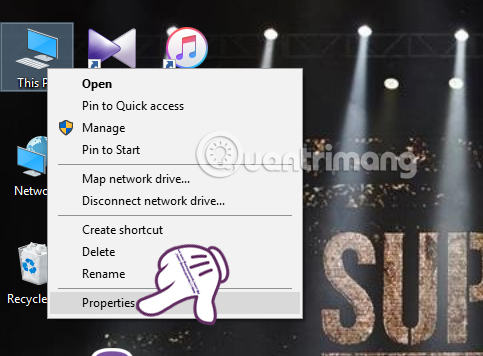 Here's how to increase virtual memory capacity on Windows Picture 1
Here's how to increase virtual memory capacity on Windows Picture 1
Step 2:
In the System interface, we select Advanced system settings .
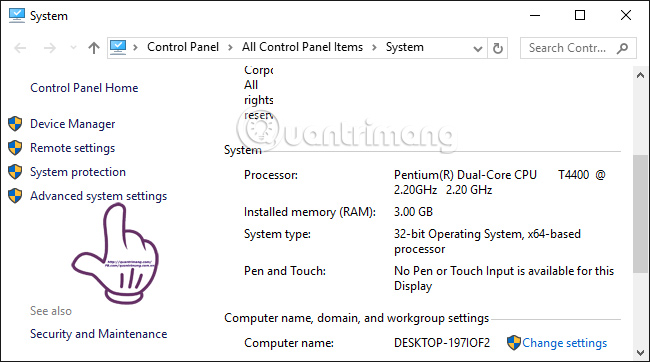 Here's how to increase virtual memory capacity on Windows Picture 2
Here's how to increase virtual memory capacity on Windows Picture 2
Step 3:
The System Properties interface appears . Here, you click the Advanced tab and then select the Settings button.
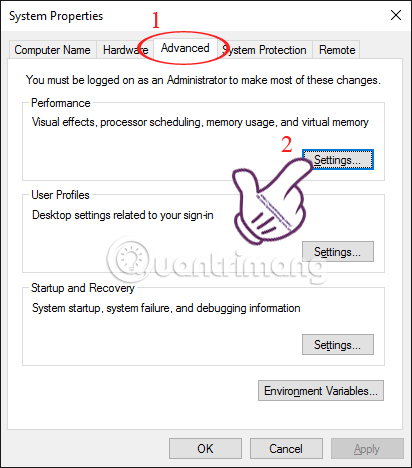 Here's how to increase virtual memory capacity on Windows Picture 3
Here's how to increase virtual memory capacity on Windows Picture 3
Step 4:
In the Performance Options window, we select the Advanced tab, then select Change . in the Virtual memory section .
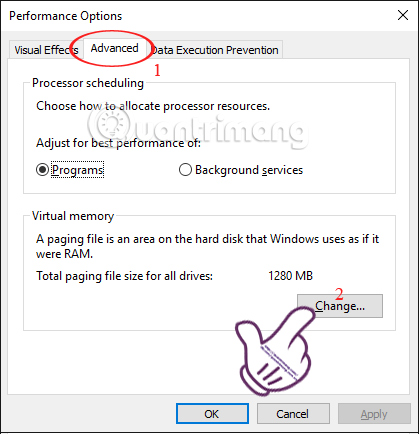 Here's how to increase virtual memory capacity on Windows Picture 4
Here's how to increase virtual memory capacity on Windows Picture 4
Step 5:
At the Virtual Memory window, uncheck Automatically manage paging file size for all drive . Next, switch to the Custom size section.
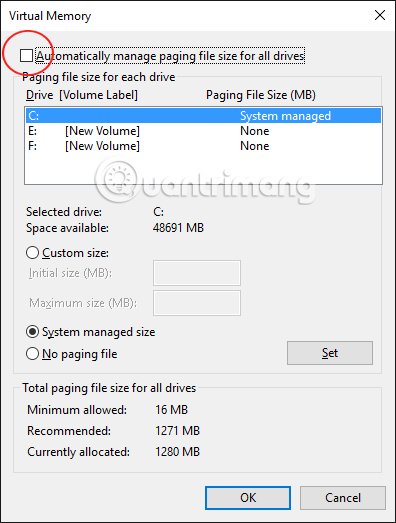 Here's how to increase virtual memory capacity on Windows Picture 5
Here's how to increase virtual memory capacity on Windows Picture 5
We will select the Custom size box and then enter the amount of virtual RAM we want to add to the machine. We will enter the minimum capacity in Initial size box to 1.5 times the amount of RAM of the computer, and the maximum capacity is 3 times the capacity of Ram in the Maximum size box .
To make it easier for you to visualize and enter the virtual RAM capacity, the Initial size line (MB) selects the suggested number of Minimum allowed below. The Maximum size (MB) to follow the number of Recommended.
After you have entered, click Set and OK to save the settings.
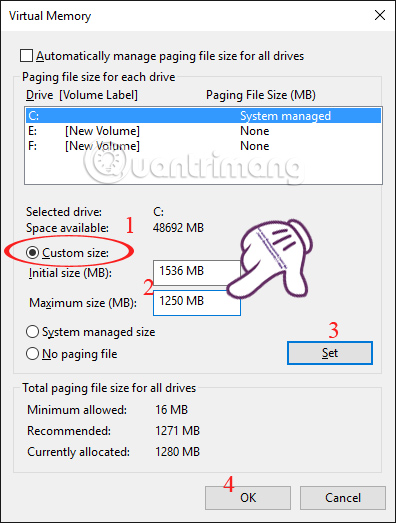 Here's how to increase virtual memory capacity on Windows Picture 6
Here's how to increase virtual memory capacity on Windows Picture 6
Step 6:
Soon the System Propreties window notifies you that you can increase the amount of virtual memory, you will have to reboot the system. Click OK .
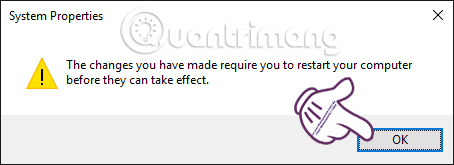 Here's how to increase virtual memory capacity on Windows Picture 7
Here's how to increase virtual memory capacity on Windows Picture 7
Now restart the computer for the changes to take effect.
Note , before restarting the computer you need to turn off running programs to avoid losing important data.
Thus, the virtual RAM setup process, increasing the virtual memory capacity has been completed. With this method, you will not worry about whether the machine has reduced its lifespan, does not affect the performance or failure of the hard drive. Besides, we can play games smoother, the speed of surfing the web also increased significantly.
Refer to some of the following articles:
- Unlock and improve Windows 10 features with 5 Registry tricks
- Fix BOOTMGR error is missing when starting Windows
- Remove "rooted" programs that have not been removed completely on Windows 7, XP
I wish you all success!
You should read it
- What is virtual memory? How to set Virtual memory for Windows computers
- Top best virtual RAM creation software on today's computer
- How to Adjust Virtual Memory
- How to handle a computer error message Your computer is low on memory on Windows
- Instructions to increase the virtual hard drive capacity on Virtualbox
- How to increase virtual RAM on Win 10
- Increase Virtual Memory for Mac applications
- How to turn USB drive into RAM for computers and laptops. Do you know yet?
- Is it good to use USB as a virtual memory for the computer?
- What is a virtual GPU?
- Monitor Hyper-V with the command line (Part 4)
- How to manage Pagefile virtual memory in Windows 10
May be interested

How to speed up the process of copying and moving data on USB drives

Disable NTFS file compression to speed up Windows computers

Speed up Internet connection by using CMD command on WindowsXP / 7/8 / 8.1

How to disable Hibernation without disabling the Fast startup

Clean up and optimize Windows with System Ninja

12 tips to speed up your computer comprehensively






 What is virtual memory? How to set Virtual memory for Windows computers
What is virtual memory? How to set Virtual memory for Windows computers How to increase MacBook memory capacity
How to increase MacBook memory capacity Top best virtual RAM creation software on today's computer
Top best virtual RAM creation software on today's computer How to increase the capacity of Oppo phone memory
How to increase the capacity of Oppo phone memory Instructions to increase storage capacity for Android TV Box
Instructions to increase storage capacity for Android TV Box How to increase the size of your iPhone when memory runs out
How to increase the size of your iPhone when memory runs out